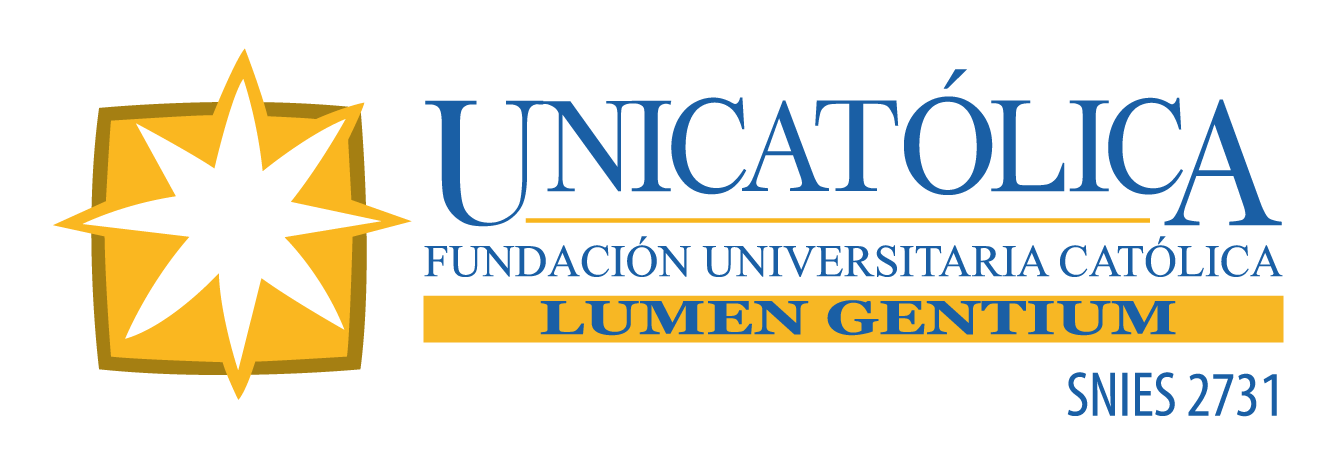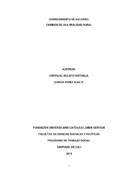Mostrar el registro sencillo del ítem
Corregimiento de Navarro: cambios en una realidad rural
| dc.contributor.advisor | Arias Tapasco, Luisa | |
| dc.creator | Carvajal Mulato, Nathalia | |
| dc.creator | Garcia Pérez, Elsa Ruth | |
| dc.date.accessioned | 2019-09-24T16:48:25Z | |
| dc.date.available | 2019-09-24T16:48:25Z | |
| dc.date.created | 2019 | |
| dc.identifier.uri | http://hdl.handle.net/20.500.12237/1735 | |
| dc.description | Este documento expone un análisis que se realizó sobre la realidad rural del corregimiento de Navarro, una zona ubicada al suroriente de la ciudad de Cali, la cual ha sufrido diferentes dinámicas que han configuraron las actividades del sector, entre esas, una práctica como la agricultura, fuente de sustento por un gran tiempo, y ahora reside en un abandono paulatino, relacionado con factores como la migración, la modificación de la estructura familiar, las pautas de crianza alejadas de la agricultura, las nuevos formas de trabajo, etc., todo ello ha contribuido a que la población desista de la agricultura como una fuente de supervivencia y recurren a otros oficios no particulares del sector como sustento. En concordancia con lo anterior, a través del método cualitativo, y la realización de 6 entrevistas semiestructuradas a los habitantes con más trayectoria del sector, se logró comprender cómo fenómenos relacionados a la expansión urbana, desintegración familiar, migración, descomposición de la cultura rural, han alterado el corregimiento entorno a la siembra, desechando el valor tradicional de esta actividad, para darle paso al acercamiento al “progreso”. | spa |
| dc.description.abstract | This document presents an analysis that was carried out on the rural reality of the region of Navarro, an area located to the southeast of the city of Cali, which has undergone different dynamics that have shaped the activities of the sector, among them, a practice such as agriculture , a source of livelihood for a long time, and now resides in a gradual abandonment, related to factors such as migration, the modification of family structure, parenting patterns far from agriculture, new forms of work, etc., all This has contributed to the fact that the population desists from agriculture as a source of survival and they resort to other non-particular trades of the sector as sustenance. In accordance with the above, through the qualitative method, and conducting 6 semi-structured interviews with the inhabitants with more experience in the sector, it was possible to understand how phenomena related to urban expansion, family disintegration, migration, decomposition of rural culture, they have altered the corregimiento around the sowing, discarding the traditional value of this activity, to give way to the approach to “progress” | spa |
| dc.format.mimetype | application/pdf | spa |
| dc.subject | Agricultura | spa |
| dc.subject | Cambios en la población rural | spa |
| dc.subject | Familia | spa |
| dc.subject | Comunidad | spa |
| dc.subject | Migración | spa |
| dc.subject | Nuevas formas de trabajo | spa |
| dc.title | Corregimiento de Navarro: cambios en una realidad rural | spa |
| dc.subject.subjectenglish | Agriculture | spa |
| dc.subject.subjectenglish | Changes in the rural population | spa |
| dc.subject.subjectenglish | Family | spa |
| dc.subject.subjectenglish | Community | spa |
| dc.subject.subjectenglish | Migration | spa |
| dc.subject.subjectenglish | New ways of working | spa |
| dc.rights.accessRights | info:eu-repo/semantics/openAccess | spa |
| dc.creator.degree | Trabajador Social | spa |
Ficheros en el ítem
Este ítem aparece en la(s) siguiente(s) colección(ones)
-
Trabajo social [101]

